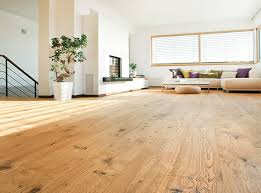Wooden floors, celebrated for their timeless appeal and lasting durability, can sometimes develop gaps over time. These gaps, which are caused by things like humidity changes or settling of the house, can be ugly and also a sources of drafts. Understanding how to address gaps in a timely manner will help preserve the beauty and function of your flooring. This is a complete guide to deal gaps in wooden floor (drevená podlaha).
1. Identify the Cause
Before tackling the gaps, it’s essential to determine the cause. The most common causes are variations in humidity, poor installation or natural wood expansion and contraction. These gaps may also be due to the home’s settling or shifting in the foundation. When you understand the root of the issue, you can choose the most suitable solution and prevent future issues.
2. Control Humidity Levels
Wood is highly sensitive to fluctuations in humidity. High humidity can cause the wood to expand, whereas low humidity can lead to gaps and shrinkage. Utilizing a dehumidifier or humidifier to keep a steady indoor humidity level (ideally between 30% to 50 percent) will help reduce the extent of these gaps. In humid climates that have extreme fluctuations in humidity the installation of a complete humidification system may be useful.
3. Use Wood Filler
To fill in gaps that are smaller fillers made from wood or wood putty is an effective option. Select a filler that is compatible with the hue of your wood and apply it with the putty knife. Fill the space, smooth it out, and allow it to dry as per the manufacturer’s instructions. After drying, sand the floor to create an even surface. Finally, apply a finish that matches the rest of the floor.
4. Consider a Floor Gap Fixing Kit
For larger gaps or those that are more numerous, for larger gaps or those that are more numerous, a floor gap fixer kit could be the better option. These kits typically include wooden wedges and shims you can insert into the gaps. Follow the instructions on the kit to install the kit. This method is especially effective to fill in gaps in engineered wood floors.
5. Reinstall or Replace Boards
In cases where the gaps are substantial or frequent, it could be necessary to reinstall or repair some of the wooden boards. This is a more labor-intensive task and could require assistance from a professional, especially if the gaps are due to poor installation or extensive damage.
6. Regular Maintenance
Regular maintenance is essential to preventing future gaps. Ensure that your floors are well-sealed and well-maintained. Take action immediately if you notice water damage and floor movement. Routine inspections will help you spot problems before they escalate to bigger gaps.
7. Professional Help
If you’re unsure about the best way to proceed or if the gaps appear vast, contacting an expert in flooring could be helpful. They’ll be able to assess the issue and recommend the most appropriate solution, and make sure any repairs are done correctly.
Understanding the reasons and solutions to gaps in wooden floors, you can keep your floors looking stunning and functioning properly for years to come.

No Responses